Mercedes-AMG SL43 Review: It Works Better With A Four-Pot Than You’d Think
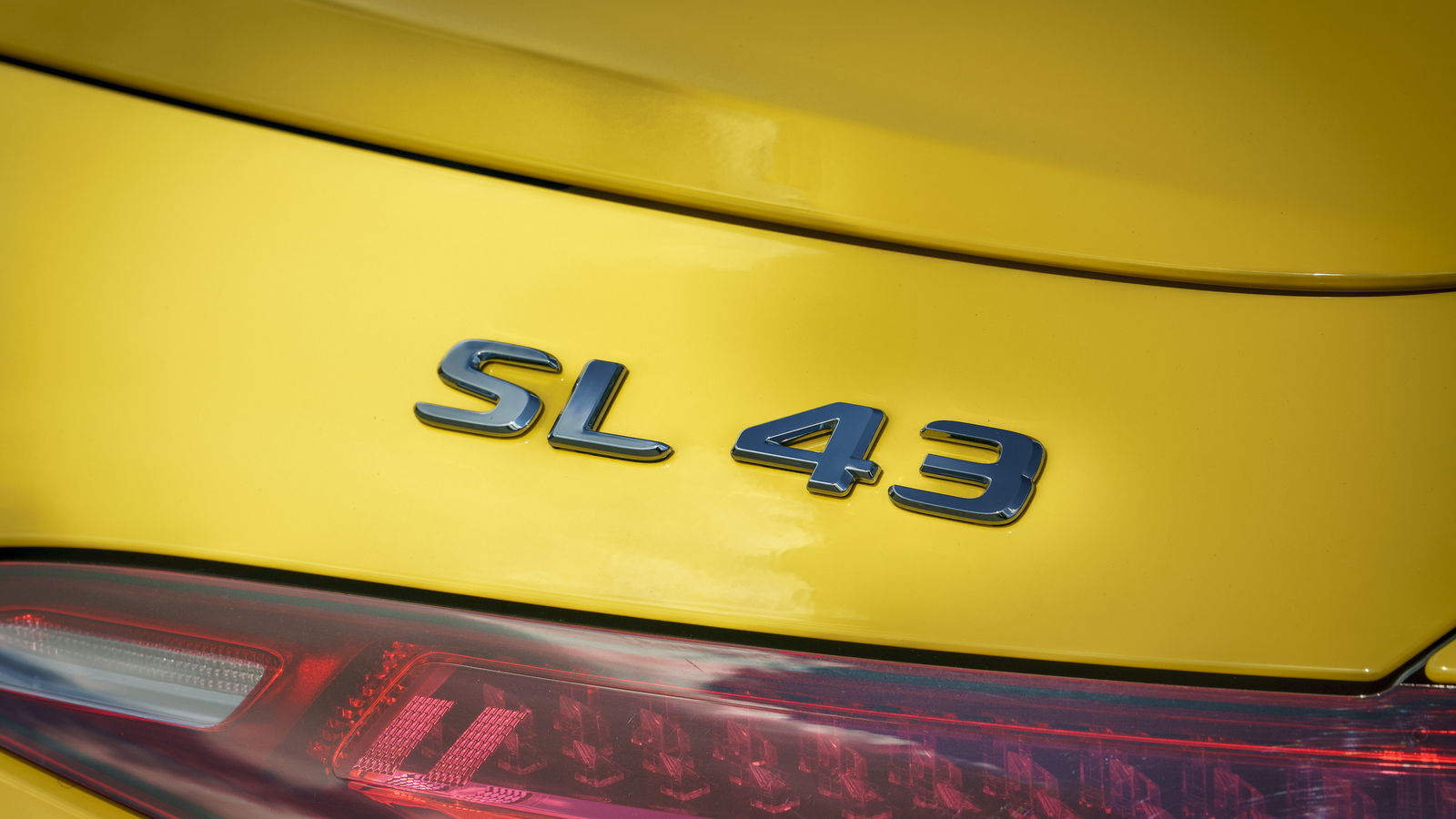
Pros
Cons
The Mercedes-AMG SL55 is a funny old thing. Not as sharp as the now-dead AMG GT Roadster, for which it’s a sort-of replacement, but not as cossetting as the old SL, it ends up being in a sports car no man’s land.
Could the answer really lie in shirking the V8 of the 55 and the more expensive SL55, and opting for the inline-four model? That might sound like blasphemy, but it’s worth pointing out the original 190SL used an inline-four, so in a way, this brings the SL full circle.
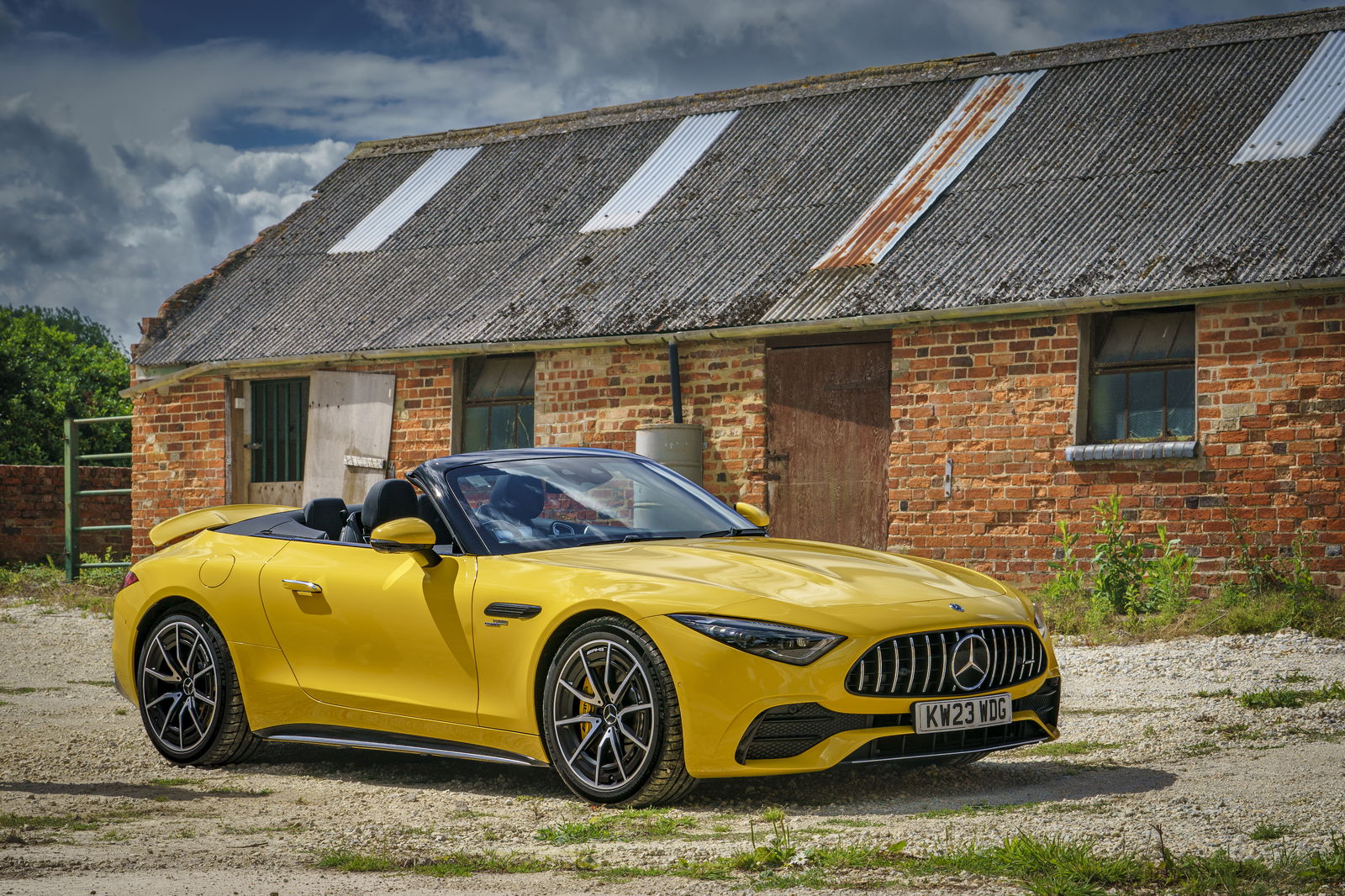
Plus, it’s hardly a damp squib, producing 376bhp to provide a 0-62mph time of 4.9 seconds. A perhaps more important number is 140kg - the amount of weight this thing’s lost relative to its V8 siblings. Granted, it’s still no flyweight, tipping the scales at a porky 1,810kg. But given that most of the bulk has been trimmed from the front end and that this SL is rear-wheel drive only (all other models are all-wheel drive), we have the recipe for the best-driving car of the bunch.
There’s no hiding the disappointment of prodding the starter button and hearing the less-than-exotic drone of a four-cylinder engine at idle, of course, especially since not so long ago, the ‘43’ designation on an AMG Mercedes meant a six-cylinder engine, which would be a pretty sweet option here.
You care about that a little less when applying full throttle for the first time. The SL43 feels impressively quick, and for an inline-four, the soundtrack on offer is sporty enough. That said, the aggressive ‘thwack’ you get in the A45 S hot hatch, with which this shares an engine, might have been a nice addition.
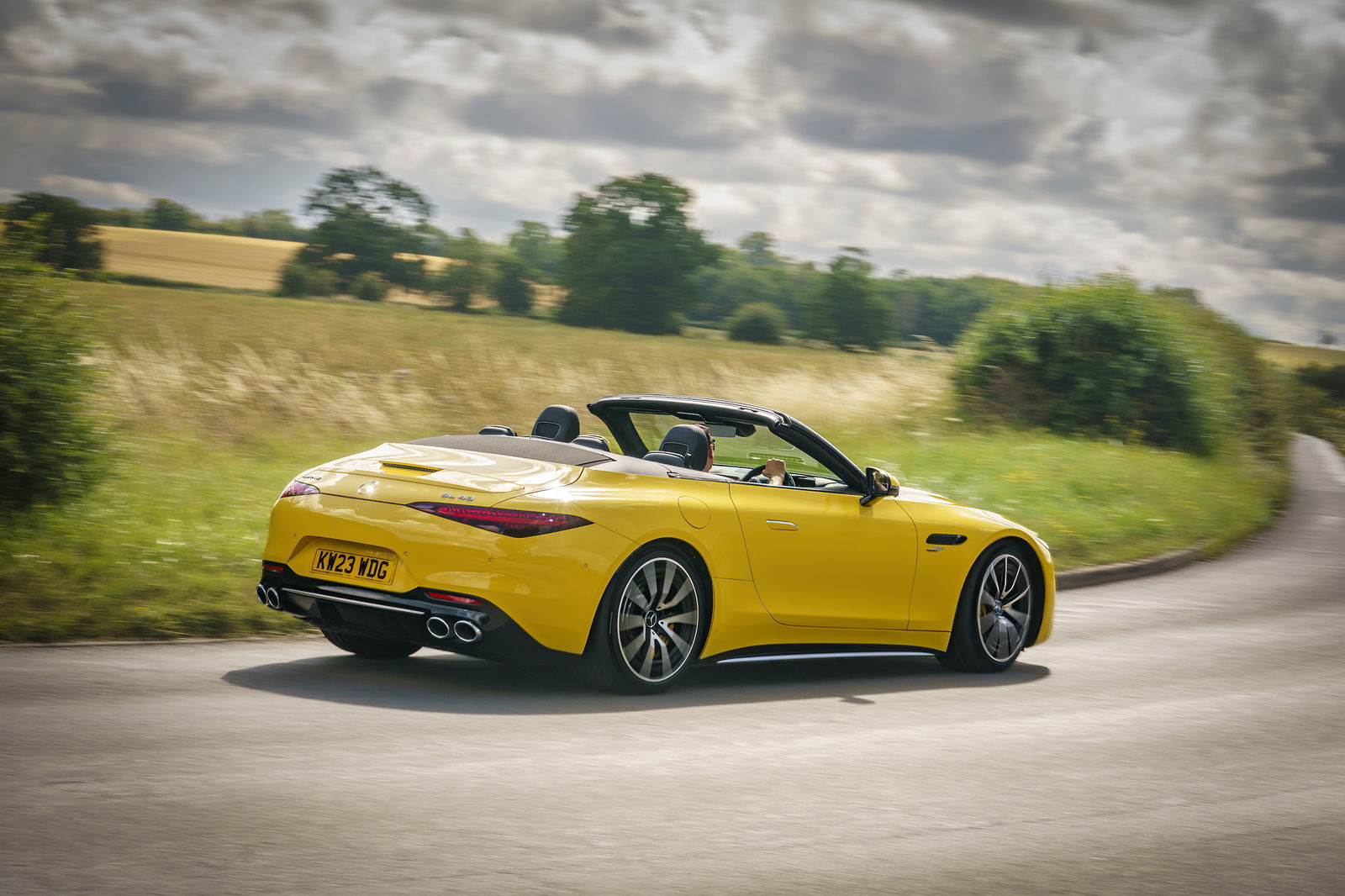
What is shared with that car, though, is Formula 1-bred tech that involves spinning up the turbocharger with an electric motor, so you aren’t hanging around for exhaust gasses to spool up - otherwise known as turbo lag. Sure enough, the 2.0-litre engine used here is far more responsive than the average turbo four.
A nine-speed automatic gearbox makes it easy to keep in the powertrain’s sweet spot, and while not as snappy as the dual-clutch gearbox AMG used to use in the old GT, it’s not something we’ll grumble about, either.
Reach a corner, and that lightened front end is immediately obvious. The SL43 is far keener to change direction than the SL55 and SL63. Where those two models’ clear purpose is somewhat muddied, the SL43 makes a far better fist of being a sports car.
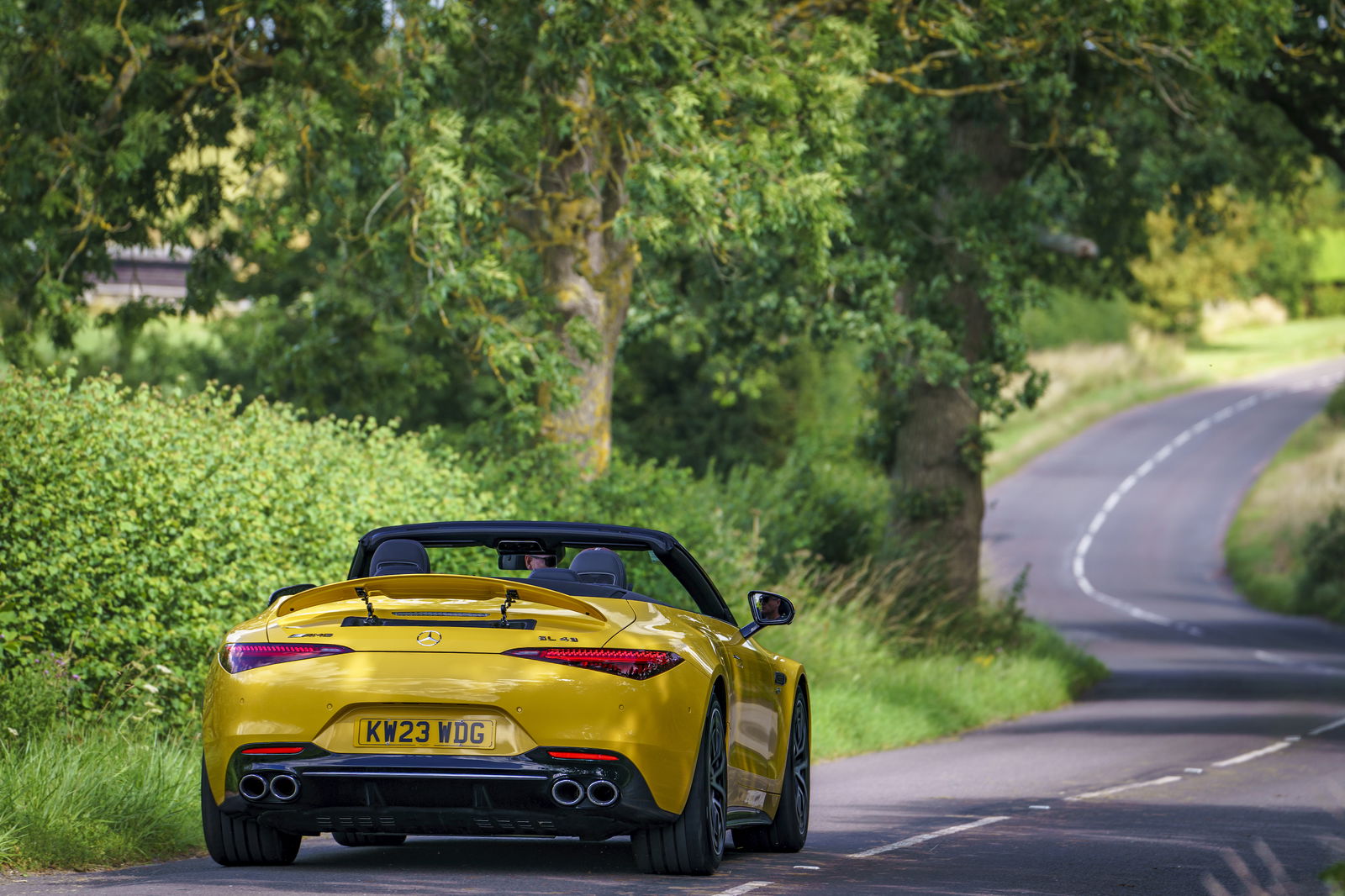
The rear-wheel drive layout helps further, making the ‘43 feel more playful on corner exits, so long as the traction control isn’t fully on - if it is, the system’s interventions at the slightest hint of slip are very aggressive. The steering is light and fast, helping make the most of the more willing front end, but the setup doesn’t give a whole lot of feedback from the road surface.
That we can live with. What’s more frustrating is that the ride/handling balance still isn’t quite there. The SL43 is firmer than it needs to be, even in its Comfort suspension modes, with an annoyingly busy ride. Sport and Sport+ simply aren’t worth bothering with on UK roads, especially as it’s not like the SL43 tips onto its door handles in hard cornering. Even in the softest mode, it stays very flat.

Other foibles present from the rest of the range include some questionable interior design choices, including a cheap-looking instrument binnacle surround which - weirdly - has a massive gap in the middle, and an electronically tilting, ‘floating’ infotainment unit which reflects light quite strongly no matter where it’s set.
The overall cabin design is decent enough, though, and there are nicer touches, like the turbine-style air vents. Want a bit more headroom? The fabric roof that replaces the old folding hardtop can be raised or lowered in a swift 15 seconds at speeds of up to 37mph. There is a fiddly sliding control for this on the infotainment unit, but that’d be best ignored - instead, you can simply hold down a dedicated (physical) button for it along the bottom. Once down, the SL does a good job of keeping you insulated from the airflow.
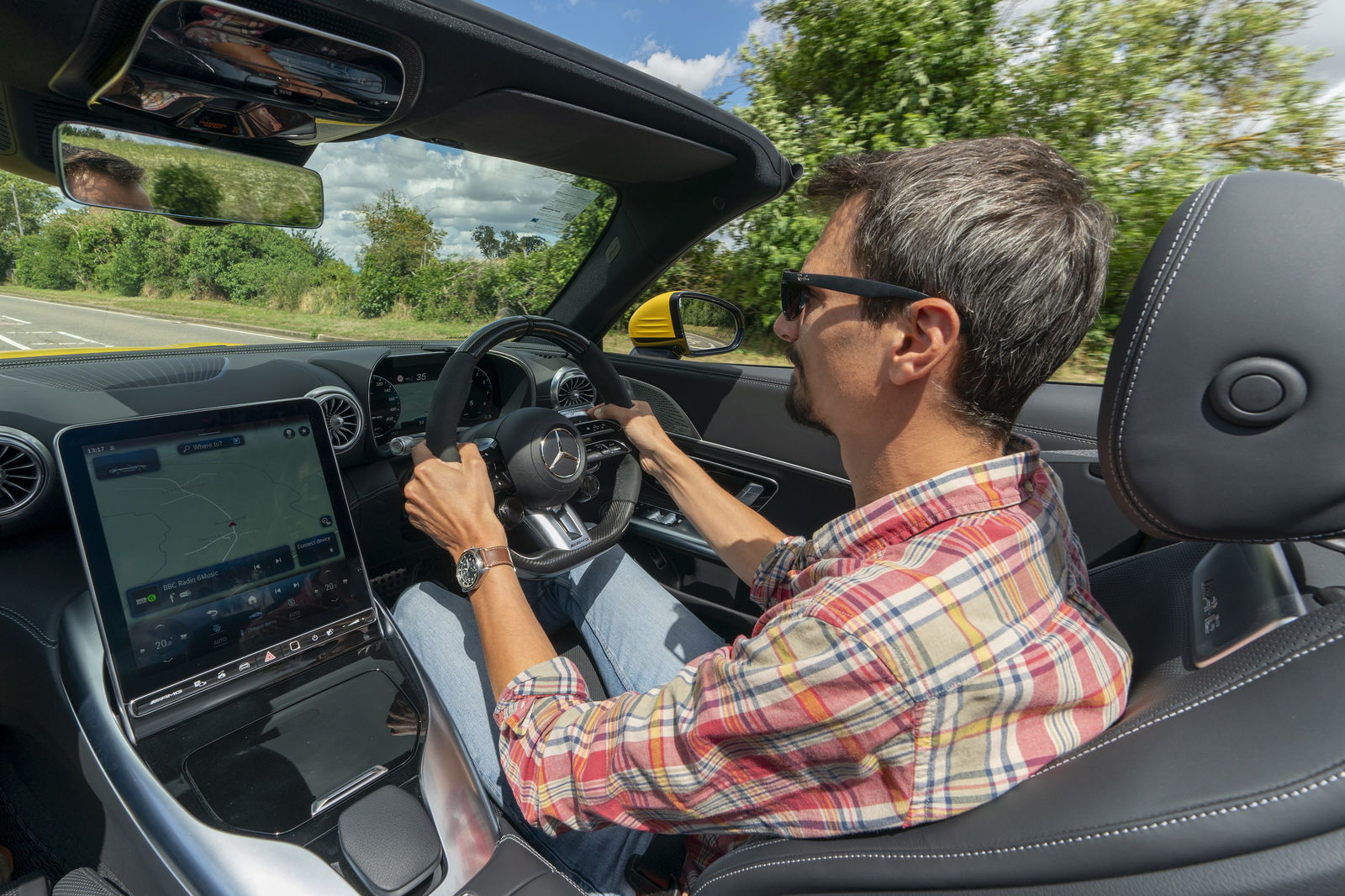
When you’re not pressing on, the driving experience is much the same as it is in the V8 models. Except, perhaps you’ll be feeling a little more smug, knowing how much money you saved over the V8. The SL43 significantly undercuts the £147,475 SL55 by nearly £40,000.
If you’ve just quickly run the sums in your head, though, you’ll know that the SL43 is still £108,000, which seems like an awful lot of money for a sports car powered by a four-cylinder engine. Suddenly, the - admittedly now rather old - Jaguar F-Type seems like a bit of a bargain. You can have one of those for quite a bit less with a V8, after all.
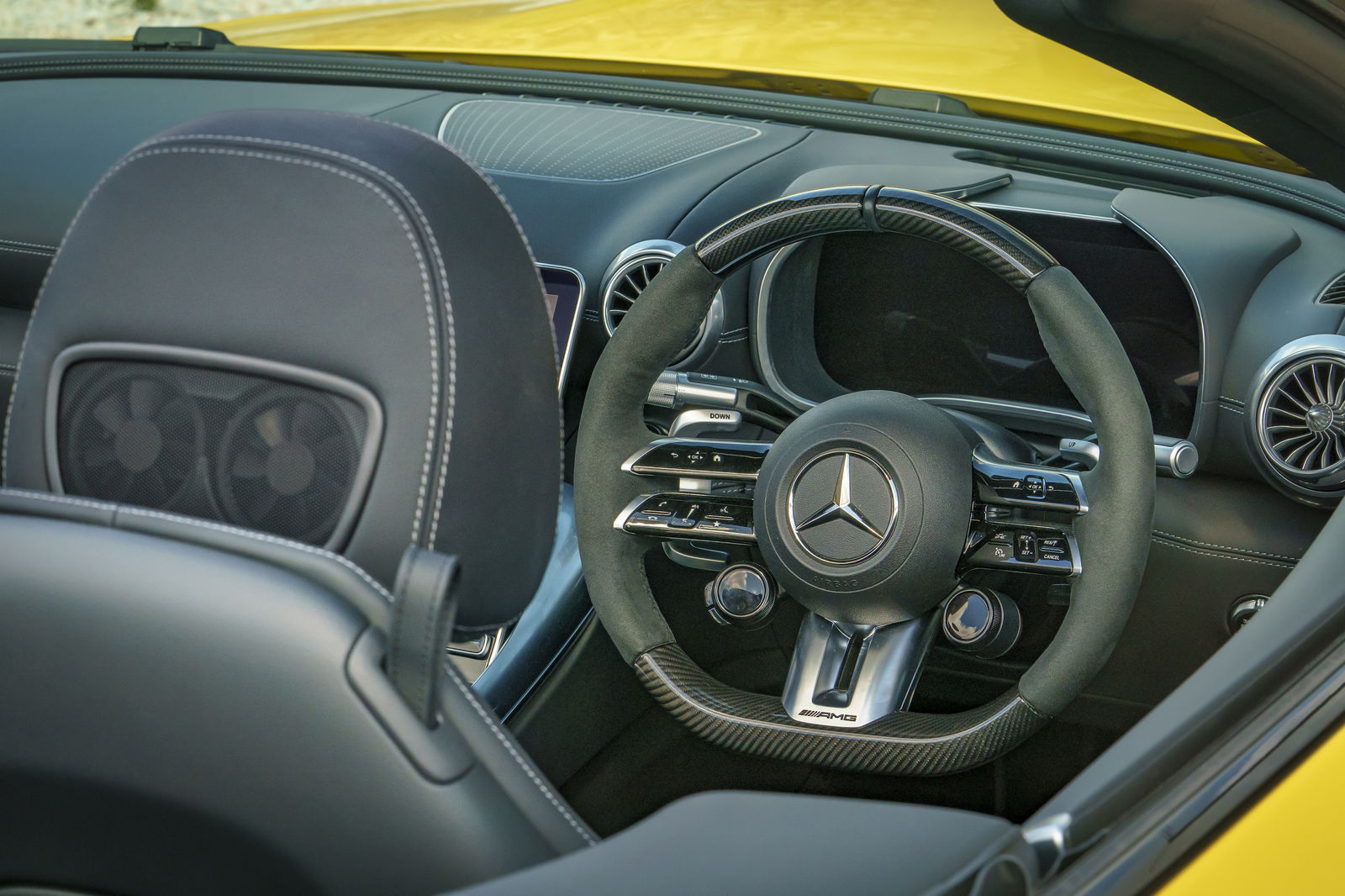
So where does that leave the SL43, then? Much like the V8 SL55s, in a bit of an awkward spot. It’s a lot cheaper than one of those V8 options, but still pretty expensive. It’s better handling, but lacks the theatrics of the pricier SLs.
You can’t help but wonder how this car might have shaped up with a six-cylinder engine. But still, it’s an intriguing proposition in the range as it is, and if the four-pot tempts a few more people into an SL, meaning its striking form appears on public roads with more frequency, that can only be a good thing.
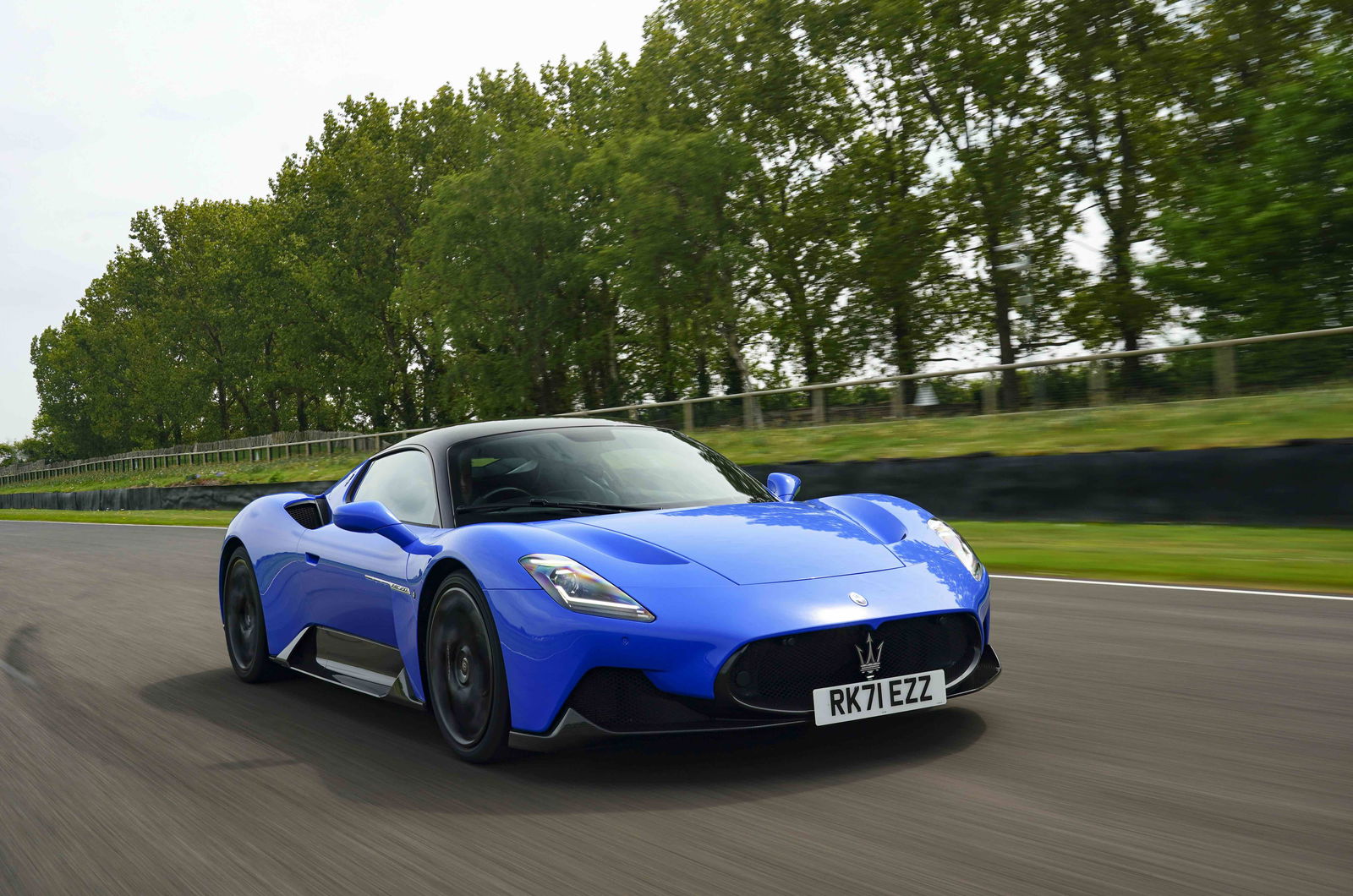
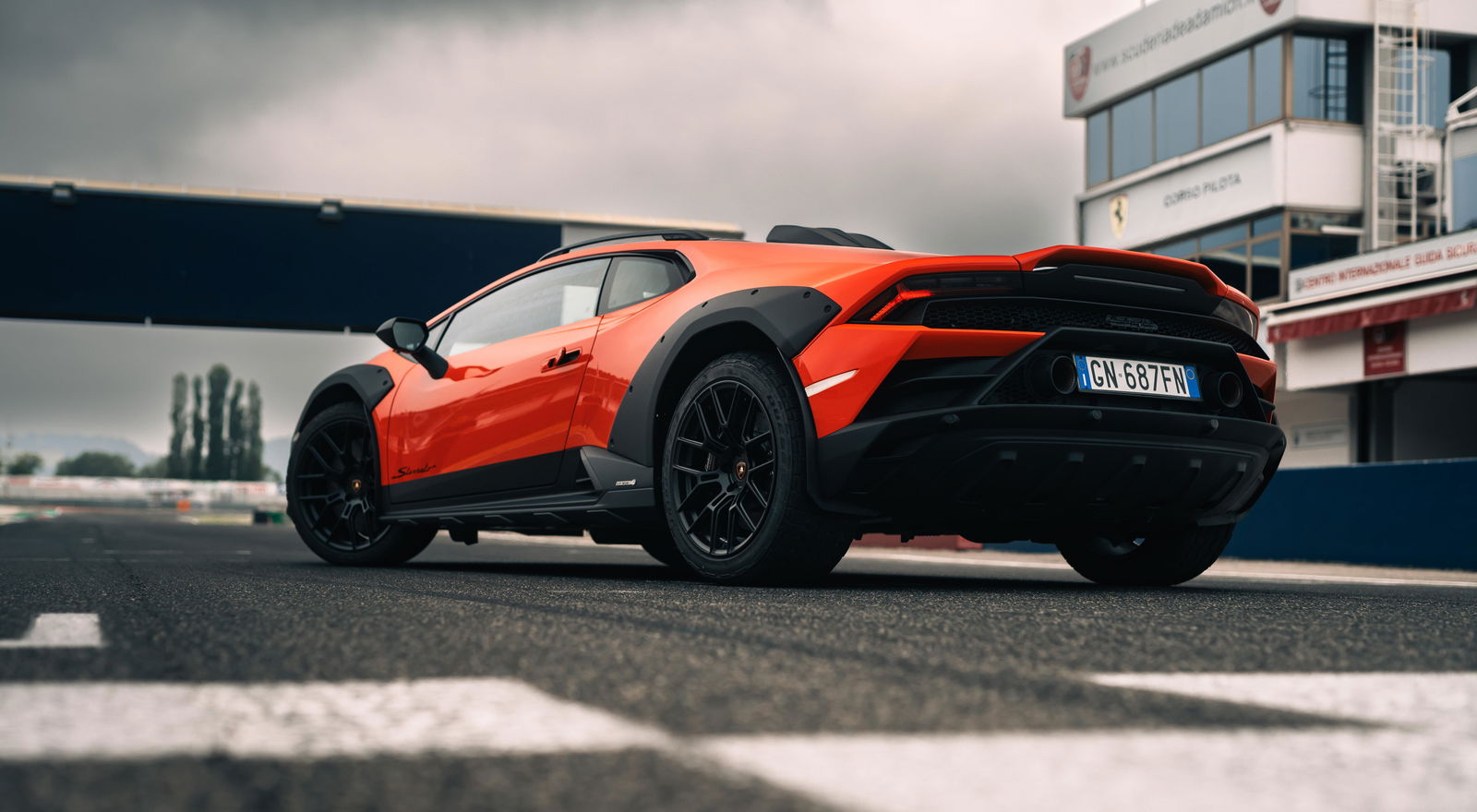

Comments